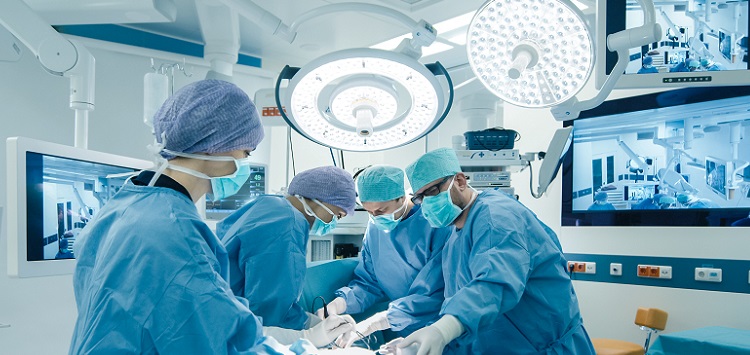Neurosurgery
Neurosurgery in Good Life Hospital
This division of Neurosurgery is a primary caretaker of several neurologic diseases, from diagnosis to medical management in addition to surgical intervention.
These neurological entities include:
- Cerebral strokes (hemorrhagic and nonhemorrhagic)
- Spontaneous intracranial bleeding (hypertensive, aneurysmal rupture, vascular malformation)
- Brain and Spine Tumors
- Degenerative spine diseases (disc disease, degenerative spine diseases)
- Traumatic Brain, Spine and Peripheral nerve injuries
- Hydrocephalus
- Congenital malformations of the central nervous system
- Pituitary tumors

Neurosurgery remains the most critical field in medicine. Our philosophy at Good Life Hospital is to be aggressive wherever indicated, aiming at saving lives with no, or minimal, surgical risks. Surgical options and alternatives, supported by numbers and references, will always be presented and discussed with the patients and their relatives, aiming at best neurologic outcome.
Technological Advancements
We handle all Neurosurgical entities, backed by a super modern operating theater, fully equipped with the most advanced technology.
Neurological Procedures Performed at Good Life Hospital
- Craniotomy for excision of simple and complicated intra-cranial tumors: cerebral, cerebellar, intraventricular, brain stem etc.
- Endoscopic approaches to skull base and pituitary tumors, assisted by our specialized ENT surgeon.
- Craniotomy for evacuation of intracranial hemorrhages, spontaneous and traumatic.
- Craniotomy for clipping of aneurysms and excision of vascular malformations.
- Shunting and diversion of CSF in patients with acute and chronic hydrocephalus.
- Lumbar microdiscectomy in patients with lumbar disc herniation.
- Anterior cervical microdiscectomy and fusion in patients with cervical disc herniation.
- Decompressive lumbar and cervical laminectomy without or with instrumentation for patients with degenerative spine disease.
- Decompressive laminectomy and fixation in patients with traumatic spine fractures.
- Minimally invasive spine surgery and insertion of percutaneous screws whenever indicated in patients with traumatic spine fractures and degenerative spine disease.
- Surgery for excision of spine tumors.
- Micro-surgery on peripheral nerves.

